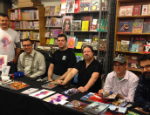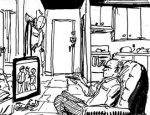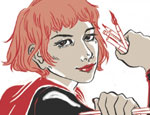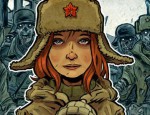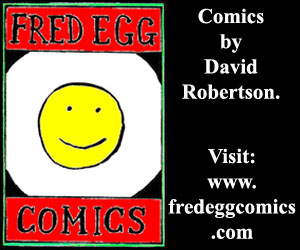With an extensive comics back catalogue covering some of the most well-known IPs of the “Big Two”, major creator-owned success stories, and an impressive cross-media career to boot, it will surprise no one to hear that industry veteran Jimmy Palmiotti has some fascinating insights into comics publishing from his decades of involvement in the business. Coming to prominence at Marvel in the ’90s and later going on to be part of the game-changing Marvel Knights imprint, Palmiotti has collaborated with numerous star creatives with notable runs on comics like Jonah Hex, Harley Quinn and Painkiller Jane to name but a few. Broken Frontier’s Ellie Egleton caught up with Jimmy who very generously spoke in great depth about his entry point into the form, collaborative processes, and the changing face of comics over the last three decades…
And don’t forget that Jimmy’s Kickstarter for the collection of 21 Down can be backed here!
BROKEN FRONTIER: This is a question that I love to ask everyone I talk to, whether a creator or fellow fan like me. What do comic books mean to you?
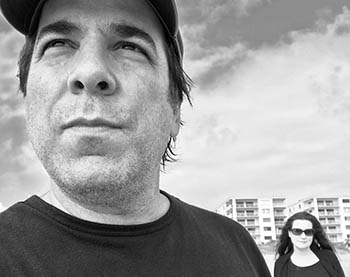 JIMMY PALMIOTTI: Comics have been a part of my life since I was able to read. I have two older brothers and an uncle that was a barber, so we always had comics around. Superman and Archies being the first few I can remember. When I was old enough to pick up a pencil, I drew what I saw on the pages, or at least tried to. Comics spoke to me and sparked my imagination and as I got older I learned the names of the people making them and started following them and eventually buying their art and so on.
JIMMY PALMIOTTI: Comics have been a part of my life since I was able to read. I have two older brothers and an uncle that was a barber, so we always had comics around. Superman and Archies being the first few I can remember. When I was old enough to pick up a pencil, I drew what I saw on the pages, or at least tried to. Comics spoke to me and sparked my imagination and as I got older I learned the names of the people making them and started following them and eventually buying their art and so on.
Comics are my sport, my hobby, and my passion. I think growing up in a big family, I learned early on how important it was to be able to tell a good story in all parts of life and my family are a bunch of solid storytellers. It’s a social art form I love, one I think deserves more attention, one that makes a difference in others’ lives and probably the thing I will be doing till the day I die, because I just enjoy making them that much. So yes, comics mean the world to me, but music and film are a close second.
BF: I was lucky enough to be born into a comic book-loving family. The first comic book ever read to me was Batman #500. What is the first comic book that you ever read and what impact did it make on you?
PALMIOTTI: I don’t have that moment where one book spoke to me. I was eased into reading them. First with Archie, then Superman and then Spider-Man and the Fantastic Four. Later, science fiction, horror and westerns. Each title brought something different to the table for me…and this all before a million stations on TV and computers, so reading and enjoying them was something I could do by myself – just go off into another room or sit on my stoop and just dig in. As I got older and looked up the meanings of words I read less and less, I got to appreciate the talent behind the books and it became less about the characters. I am still that way. I buy comics based on the art first. If I can’t look at it, it’s a pass for me, no matter who wrote it.
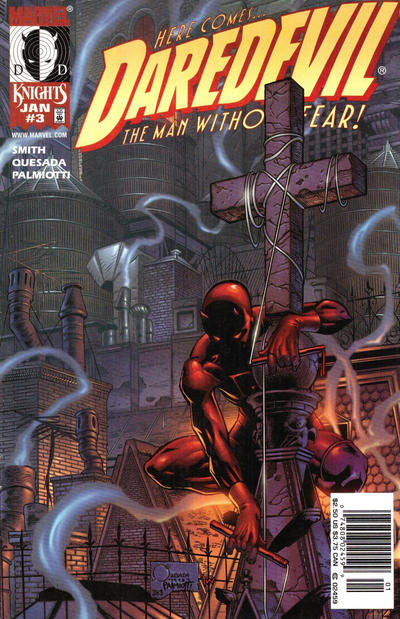
Cover by Joe Quesada and Jimmy Palmiotti
BF: As both a writer and inker, how does your creative process differ between these two roles?
PALMIOTTI: When I was inking, and I still do time and time again, it was something that felt effortless and had little responsibility past doing right by the penciler, but as the writer, this carried weight and responsibility that had a completely different production process behind it. Writing required me to really know the characters, understand their history and also be able to tell a story in a way that an illustrator could understand – within the limitations of the format.
The inking job is easier, more relaxed, and honestly after inking over 1000 books, I needed to do something more. I felt I needed to start applying myself in different ways. It’s more of a challenge for sure, and that’s the part that keeps me coming back for more. With each new job, I am constantly trying to get better at my craft and put out there the things that interest me rather than always delivering the same old superhero work over and over. During Covid I also taught myself to color, so eventually I am working my way backwards to my original love, actually drawing comics.
BF: You’ve worked on a wide range of characters and series throughout your career for many different publishers. Is there a particular character or series that you feel most connected to or enjoy working on the most? What draws you to these characters or stories?
PALMIOTTI: I have been super lucky over the years being able to not only write characters that I read as a kid, but also being able to create new ones with my own voice behind them. I honestly do not accept an assignment if I can’t find some kind of connection to a character. For some reason, I seem to connect with female characters easier than male. It’s been like that in real life as well. With Marvel, I got to work on Misty Knight and Colleen Wing more than a few times, and at DC with Power Girl, Supergirl, and Harley Quinn. I think what always drew me to these characters is that they always seemed underdeveloped in a way.
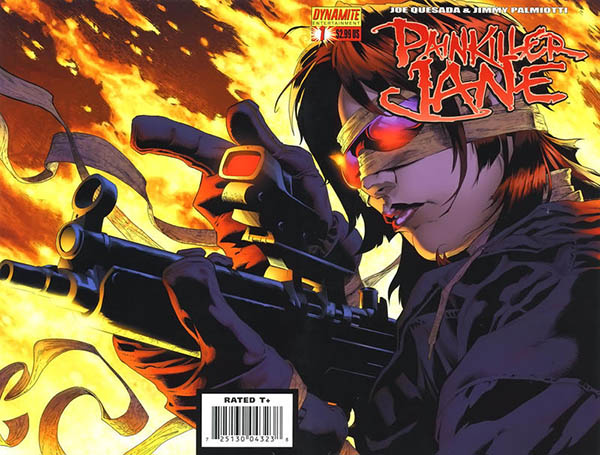
Cover by Joe Quesada and Jimmy Palmiotti
With Harley, the deeper I was digging into her past, the more and more I saw her only being used as a supporting character and wanted to change that. Same with Power Girl – when I asked the editors where she lived and worked, I got blank stares. Nothing had really been established. When writing any of the characters, I try to figure out what makes them tick- and why others enjoy the character. I take a look at their lives and who they are and how they would function in different surroundings and around different people. It opens up hundreds of story ideas for me. I have a few I created or co-created over the years like Painkiller Jane, Ash, Triggergirl and recently Fantasima that I put a lot of myself into and with that done, the connection and bond is the best part of writing them. Being able to see their specific choices and hear their voices is always the easiest way for me to write their stories.
BF: My Dad is a huge enthusiast of western comics, so he’s particularly intrigued to hear about your experiences working with Jonah Hex. Could you share what drew you to this genre and what aspects of it you find most appealing? And how was it to work with legendary artists such as Darwyn Cooke, Paul Gulacy and Tony DeZuniga who contributed either covers or interiors throughout your time on the character?
PALMIOTTI: First, let me say I understand where your Dad is coming from, and when I got the gig to co-write Jonah with Justin Gray, I took horseback riding lessons, visited a ranch and researched the hell out of things. The last thing I wanted to ever hear say is that the book doesn’t feel authentic. To explain it further, we have to go back in time. I was born and lived in Brooklyn New York for 45 years of my life, a cement jungle with little green around me, so watching and reading westerns have always held a certain kind of otherworld feeling about them and then when I was about 12, I picked up the original Jonah Hex series and felt a connection that’s hard to explain other than saying I enjoyed the idea of the reluctant hero and the idea of exploration.
Add to that I am constantly fascinated with the history of everything and travel is a big part of my life now, and with that constant discovery, the stories pile up. In the end, Jonah Hex is one of the coolest characters in comics and westerns and I felt I had something to bring to the character. With my writing partner Justin Gray, we got to go crazy doing done-in-one stories that I feel will stand the test of time.
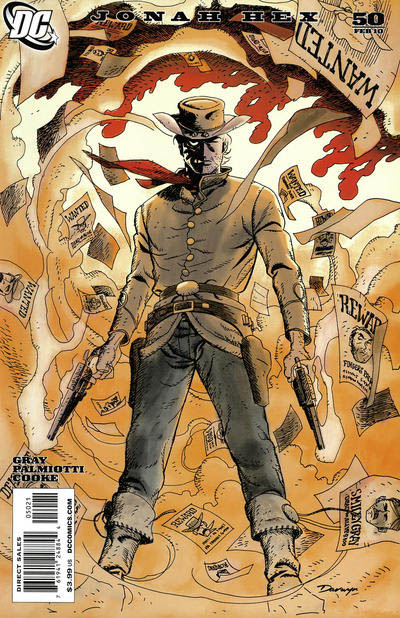
Cover by Darwyn Cooke
Justin and I were given a lot of room and power while working on the Jonah Hex series and Dan DiDio trusted me enough to hunt down artists that I liked and hire them, and I got super lucky. I had been a fanboy to Tony DeZungia and for years would get commissions from him, so imagine years later I actually got to hire him for a Jonah Hex book. I had won a childhood lottery. And then my list of favorite artists came out and we went after everyone on our dream list. Some were easy because they were close friends like Darwyn Cooke and Paul Gulacy, and others took a little globe-trotting to get, like Jordi Bernet, Russ Heath, Luke Ross and so many more. It was the ultimate compliment that these people wanted to draw something Justin and I wrote and I still pray that one day DC will collect those 70 issues and give them the respect they deserve. I would write the character in a heartbeat, but until then, I am writing a Gunslinger series for Todd McFarlane set in the 1800s.
BF: Beyond comics, you’ve also ventured into other forms of media, such as TV and video games. A lot of this has been through Paperfilms, your own powerhouse of creativity shared with Amanda Conner and other creatives. How does storytelling differ across these mediums, and what unique challenges and opportunities do they present for creators?
PALMIOTTI: Writing screenplays is a full-time job, and video games even more so. They are both exhausting to do, exciting to see done and as always after any success you have in these fields, you are forgotten again in a heartbeat. Especially TV and Film, unless you are related to a star or producer. I’ve done a lot of work in these and many more fields and it’s because of my storytelling skills and professionalism when working in them. A lot has to do with my world-building skills as well. The really tough challenge for me is things take years to get done, and in that mix, minor miracles have to happen.
Comics are simply easier, no budgets and the turnaround is quick… and when producing my own books, there is no studio to answer to. I do love screenwriting and I currently have an unproduced Painkiller Jane and Back to Brooklyn screenplay I co-wrote with Craig Weeden which we are shopping around, but again, it’s really tough, even with the representation, which we have. My current mindset is keep creating and let others figure all that out. That Hollywood grind is not great for creative minds.
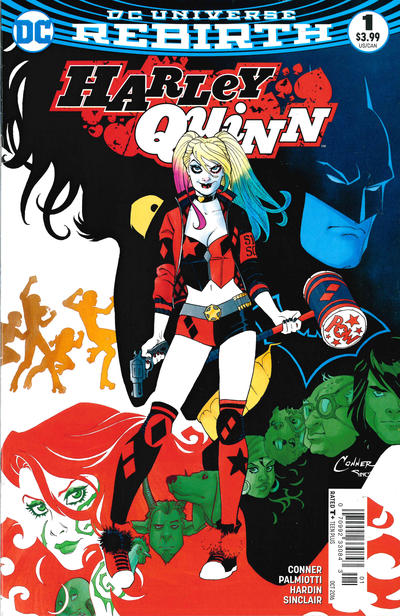
Cover by Amanda Conner
BF: I have read that you work from an office in a comic book shop. This must be very cool! What does a normal day look like for you when in the shop?
PALMIOTTI: I get into Emerald City Comics in Clearwater about twice a week in the AM, make sure all the alarms are shut off and then do a bit of work and then walk into the main store to shoot the shit with the staff – ask what is selling, what is hot or not and get their feedback on a million things. As an example of how useful it all is, I recently was offered to do a new Gunslinger series for Todd McFarlane and I needed to read the back issues of the book- and that was easy, went to the rack and picked up a set and got to reading. Yeah, the series starts this fall, but the thing is being in this shop gives me a really good actual perspective to what people are looking for these days and it changes often. I love the place and the crew there. It is my second home.
BF: I have been a follower of yours on Twitter/X for many years now and I always love it when you share a piece from your original art collection. Can you please share how you first started to collect comic book art? Whose work do you have and what are the treasured pieces in your collection?
PALMIOTTI: I started in the late 70s and only bought a page or two a year because I grew up very poor and even spending 20 bucks for art was a luxury. Later in my 20s I started making a decent living in advertising and bought art from guys like Mike Mignola, Frank Miller, Mobius, Manara and so on. Later around 2005, I sold most of the art and bought the house I live in today. Over the years though, I collected all different art and illustrations as my tastes changed and feature some on my CAF gallery.
I have been collecting for a while now and have even been made one of the board for the OAX conventions in Orlando Florida. If you haven’t heard of it, it’s an entire comic convention that only features original art and creators doing commissions and selling their work. It’s a dream come true for a guy like me. I have sold a ton of things over the years, but anything given to me as a gift I have held on to. I have some pieces near and dear to my heart by Darwyn Cooke, Paul Gulacy, The Hernandez brothers, Robert McGinnis, Frank Frazetta, Joe Kubert, and more. They are either on my walls or in storage in a very safe place. I am a collector, so I am constantly swapping and searching, the beauty of collecting.
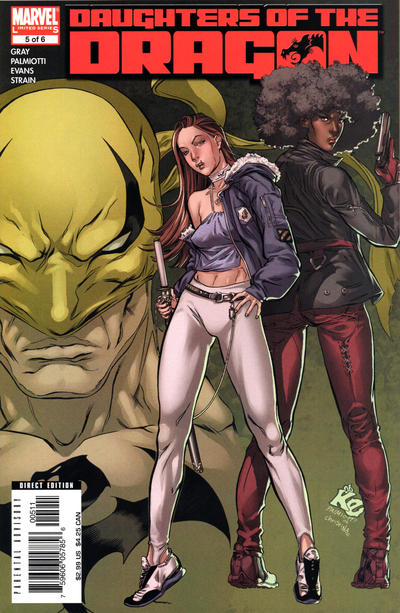
Cover by Khari Evans, Jimmy Palmiotti and Christina Strain
The Industry
BF: Collaborations are a big part of the comic book industry. Can you share some insights into what makes a successful collaboration between writers, artists, and other creatives? How do you navigate differing creative visions and ensure everyone’s voice is heard?
PALMIOTTI: I try to work with level-headed people that have amazing storytelling skills. I don’t chase names, I chase quality. When I co-write, I do it with people that bring something to the table, otherwise I can do it myself. I love another voice and working with others. I have been a showrunner and also worked in writer’s rooms and you have to leave your ego elsewhere to do this properly.
BF: There’s been a growing recognition of the need for diversity and representation in comics. How do you approach incorporating diverse characters and perspectives into your work in a way that feels authentic and respectful?
PALMIOTTI: My modern stories reflect the world I live in. When writing history, I do my research. I write characters with different personalities, and they can be heroes, assholes, greedy as fuck, political, and as sweet as sugar, all from different backgrounds. I write them true to the character of who they are. If I am writing someone else’s character, like Batwing, Colleen Wing, Misty Knight, Jonah Hex, Uncle Sam, Harley Quinn, and so on, I stay true to who the character is, which is the most important thing… and if they live in a world that is not part of mine, I do my research. The way I live my life is all about constant exploration. You want to be a good writer, then go out, fall in love, have your heart broken, get lost in a foreign country, study others’ history and be open to new things. Respect starts with appreciating others cultures and learning from them.
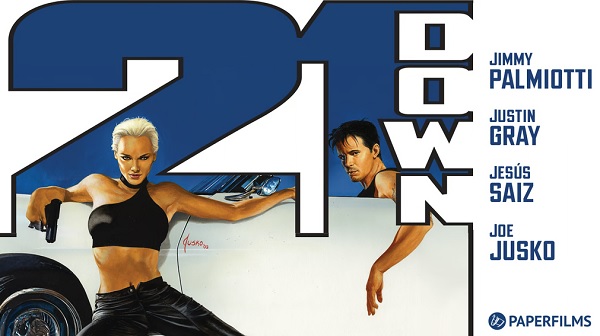
BF: Similarly, you are well known for working on female-oriented books, some for the ‘Big Two’ like Harley Quinn and Daughters of the Dragon and some creator-owned like Painkiller Jane. You also work closely with one of my favorite women in comics, Amanda Conner (Please say “hello” to her from me and a big thank you for some of my favorite covers in my collection!) How can we, as an industry, continue to welcome more and more women into comics?
PALMIOTTI: Amanda sends a big hug right back at you, and honestly, we are seeing more and more women in the industry daily and it’s an exciting time. I think as comics keep exploring different genres the field will continue to open up and more women will be interested in working in graphic storytelling. It starts by people wanting to read the books – and then the making of them comes along later, so variety is the spice of life for comics. I also find that the rates have to start improving for more people wanting to get into the field, so that too has a lot to do with people entering the profession. As comics stand, it is not the greatest paying job for the amount of work someone has to put into interiors. Comics have a million cover artists but very few interior artists that are excellent storytellers.
BF: Through Kickstarter, Paperfilms is currently crowdfunding the 21 Down Collection which sees the hit Wildstorm series collected for the first time and finished with the thirteenth issue. Are you pleased with the progress of the campaign so far? And how does it feel to be seeing the book back in print and finished after 22 years?
PALMIOTTI: It was a long road to get here, but the crew at DC made this whole idea so easy for us and we are grateful for it. I am super excited to be able to collect the 12 published issues and the unpublished 13th issue finally in one beautiful hardcover for the first time ever and I am super happy with the way the campaign is going so far. The great thing about it is we are also selling a lot of the digital collections which really helps get the books out all over the world. We tried to make the campaign as easy as we could for people to back it. Check it out here.
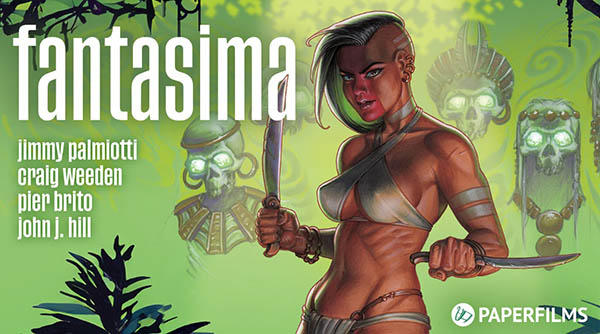
BF: You are generous in your backing of multiple crowdfunding campaigns and often share your support for other creators. What is it that makes for an eye-catching campaign? And do you think crowdfunding will continue to play a significant role in the future of comics?
PALMIOTTI: Crowdfunding will continue to become a major way for creators to do their thing but watching mainstream companies use it as a money grab will have its fallout. I’m happy on one hand that they bring new people into the scene, but on the other hand we are having campaigns that release the same exact product a few months later for less money and that leaves a bad taste in the consumers’ mouths. I think the future will be people like me using their mailing lists like we have at Paperfilms.com to directly sell to consumers and take the middleman out of the picture.
This will take time and a lot of confidence and good will being part of their strategy. I know we are a few years away from doing it ourselves, but it takes time and money and this is a nickel and dime business – what people make on their campaigns, it’s a lot less than people think. The final number loses 10% the first day for the platform and credit card companies alone, and then there are so many other factors involved. I am constantly exploring new ways to reach more people but there are just a large % of people that will never back them again after having a bad experience. I will say after 20 something campaigns, we have 100% customer satisfaction, and we work hard to make it happen. It all comes down to respect for the consumers.
BF: As a veteran in the industry, what advice would you give to aspiring comic book writers and artists who are looking to break into the field? Are there any lessons you’ve learned throughout your career that you wish you knew when you were starting out?
PALMIOTTI: Never sign a contract without a lawyer looking it over first. It’s good to be excited about a job offer, but no one ever lost out on a gig by letting the client know your lawyer needs to look over the contract. As well, make sure that for any new characters you create for the ‘Big Two’ you fill out a form with shared ownership for each and every one. The companies only offer this by asking most of the time. Another thing is to make sure that if working with a company on a new character, you make a good deal and try your best to retain as much ownership as you can, and make sure there is a rights reversion clause on each and every contract. Anyone telling you they don’t offer it, walk away. Slow your roll and take your time on the business side of things to protect your rights. I learned the hard way working with some terrible people over the years playing games with creators so I hate to see anyone else have to go through that.
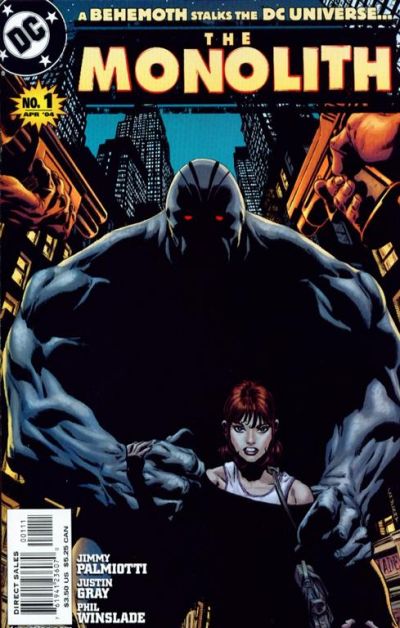
Cover by Phil Winslade and Chris Chuckry
Last bit of advice is IF you feel the need to be on social media – always keep calm and have integrity when you post. Support others in the field by lifting them up and understand that everyone is trying their best. If you do not enjoy someone’s work, there is no reason to post about it. Be a good person as much as possible and understand that not everyone thinks like you. Try to limit the bitching.
Thinking Ahead
BF: With your love for travelling, can you see yourself and Amanda Conner appearing at a UK convention anytime soon? We would love to see you!
PALMIOTTI: We’ve done a couple in the UK over the years and were invited late in the game to another this year, but we were already booked. We love traveling so as long as they hit us up in advance and treat us well, we are always game. Last year we were in the Netherlands for a show and the year before in Brussels, so it is overdue.
BF: What projects are you currently working on, and what can fans look forward to from you in the near future? Are there any dream projects or collaborations that you haven’t tackled yet but would love to explore?
PALMIOTTI: Currently I have a series of Kickstarters that are going to be started every month. The current is the 21 Down collection, then next month is issue 4 of our Sex and Violence anthology and more Painkiller Jane after that. Mainstream starting this fall is The Deadly Tales of the Gunslinger – a monthly title put out by Image/Todd McFarlane that features stunning artwork by Patric Reynolds. Outside of that, Amanda and I are working on a couple of projects and one-shot to drop in 2025.
BF: Lastly, where is it best for people to connect with you online and to find your library of work?
PALMIOTTI: I am on Instagram and X – but the best place is to go to Paperfilms.com and subscribe to our newsletter in the pop-up. We also have a shop there to pick up comics, digital downloads, artwork and more.
Interview by Ellie Egleton





